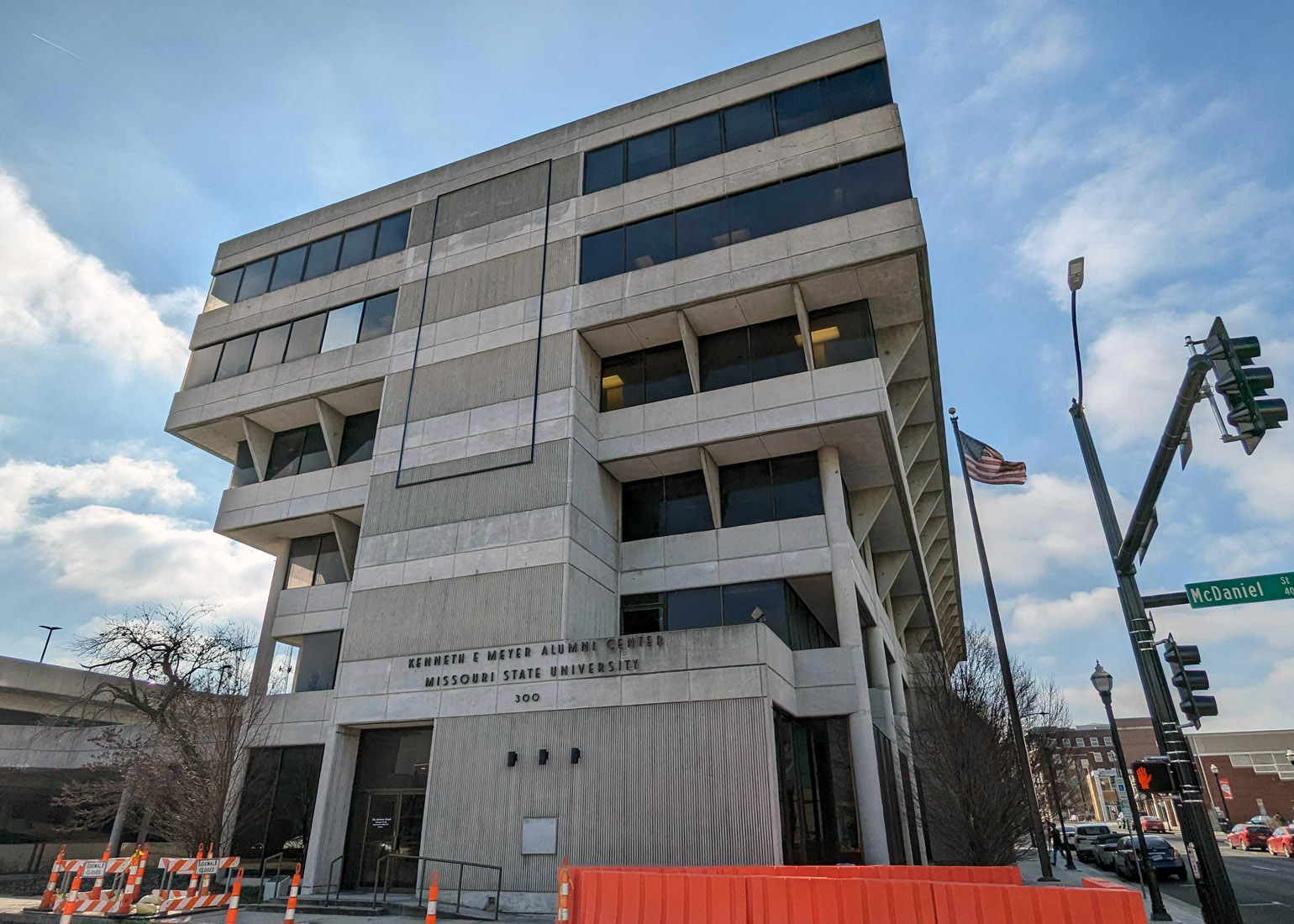As development of a new on-campus alumni center continues, Missouri State University and its fundraising foundation formalized its relationship.
The university’s Board of Governors on May 9 approved a memorandum of understanding with the Missouri State University Foundation. The document is effectively a contract that clarifies relationships, responsibilities and other legal standings.
It covers a variety of matters, from basic descriptions to specific details about the Clifton M. Smart III Advancement Center, a new headquarters for the foundation to be built at National Avenue and Bear Boulevard.
President Clif Smart said the foundation’s recent sale of its current alumni center and a new president further show the need for a written agreement.
“With the sale of its building, and my retirement coming, both the foundation and university administration thought we should memorialize the relationship, operations and commitments in a document,” Smart said. “It’s also a best practice.”

Brent Dunn, executive director of the foundation, said the lack of such an agreement was noted at a Association of Governing Boards of Universities and Colleges conference last year. Dunn and others discovered that having such a memorandum of understanding was common.
Because the foundation is only 43 years old, and has worked with only two foundation directors and five university presidents over that time, a formal relationship was never put to writing.
“There are foundation boards and universities that do have issues,” Dunn said. “We haven’t had them in 43 years, and we don’t anticipate having them in the future. But having this MOU certainly delineates who does what.”
Advancement center construction part of agreement's details
The agreement includes a funding structure for the new advancement center. Working with a preliminary budget of $20 million, the agreement calls for about $15.8 million to come from the foundation:
- $5.8 million will come from the sale of Meyer Alumni Center to Community Foundation of the Ozarks.
- $6 million will come from 3- to 5-year pledges in new fundraising.
- $4 million will come from foundation reserves.
The university and foundation will split the remaining estimated cost of $4.2 million. These estimates will be narrowed down once actual construction costs are known.

“From my perspective, the most important piece of this document has to do with … how the foundation sold its building and is now working with the university to build a new advancement center,” said Rachael Dockery, general counsel for MSU. “The foundation has a lot of skin in that game.”
The agreement also ensures the foundation will primarily occupy the building to operate the alumni center and Office of University Advancement for 20 years after its completion.
Dockery also outlined other details the agreement codifies. She said it memorializes what has always been observed between the two.
- The two entities will remain separate. Because the foundation is a tax-exempt non-profit organization, donations are tax deductible, and anonymous donations to it are not subject to Missouri’s Sunshine Law, Dockery said.
- The foundation’s executive director is considered a university employee ,and the university’s president is responsible for hiring, firing and evaluation decisions. Dockery said that the agreement stresses the importance of getting the foundation board’s feedback about those personnel decisions.
- The university’s president and a member of the university’s board of governors are given seats on the foundation’s board of trustees.
- If the university’s board forms a committee including community members, a foundation member will be part of that committee.
The foundation’s board of trustees signed the agreement during a meeting earlier this year. The agreement was developed using a template from the Association of Governing Boards, Dunn said, then customized to reflect the relationship between the foundation and university.
“As the AGB says, once you have seen one foundation, you have seen one foundation,” Dunn said. “Foundations are different from institution to institution. Ours is unique, but very effective.”
Over its history, the foundation has raised about $433 million in gifts, about $65 million of which are deferred. In 2022 it announced that $274 million had been raised over the five-year Onward Upward campaign, surpassing a goal of $250 million.
That money has been used to upgrade the campus significantly over the last decade. In addition to the advancement center, the university is also renovating and expanding Roy Blunt Hall (formerly Temple Hall), and designing the Judith Enyeart Reynolds Complex, a project that will replace Art Annex and renovate Craig Hall.
Reporter's note: This report has been edited to correct a dollar amount.

